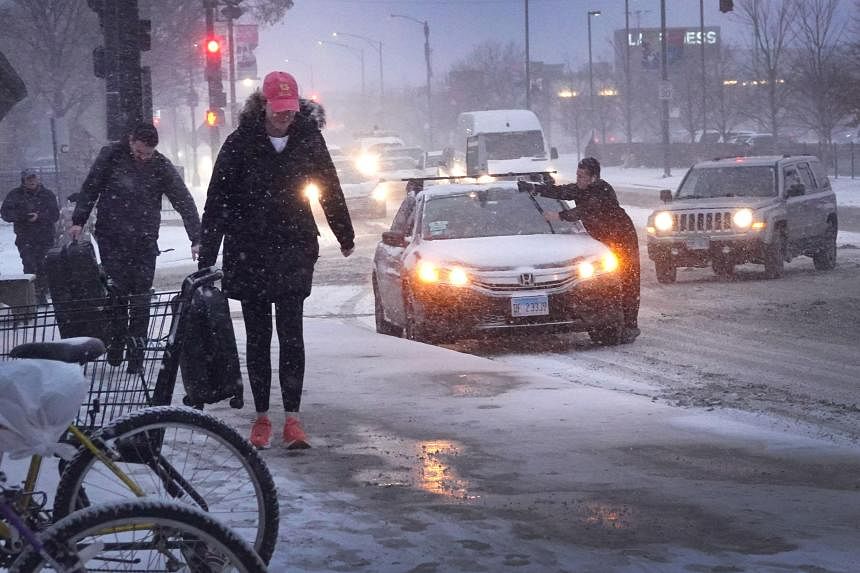
Just before the long weekend, the bomb storm caused temperatures in several states to dip below -45°C, resulting in at least 12 fatalities across the USA. When atmospheric pressure falls too low levels, a bomb cyclone develops. When a storm experiences a pressure decrease of 24 millibars (a unit of pressure) within 24 hours, it is classified as a bomb cyclone.
The number of flights cancelled exceeded 4,000 as a severe winter storm continued to interfere
On Friday, the number of flights cancelled exceeded 4,000 as a severe winter storm continued to interfere with thousands of travellers’ plans across the country. Due to severe weather, Buffalo Niagara International Airport in New York had to cancel all flights.
According to flight tracking website FlightAware, numerous airlines stopped more than 4,400 aircraft operations on Friday, one day after roughly 2,700 flights were cancelled. As per FlightAware statistics, the airports in Chicago, Seattle-Tacoma International Airport, and New York’s LaGuardia experienced the most flight cancellations on Friday. Aside from the cancellations, there were also 5,750 delays as of 2 p.m. ET, according to CNN.
Due to “hazardous weather conditions,” Buffalo Niagara International Airport in New York had to completely halt all flights. A tweet from the airport’s official Twitter account read, “The Buffalo Airport Airfield is closed due to hazardous weather conditions, and all flights scheduled for the evening have been cancelled.”
The state highway authority closed motorways as serious crashes were reported
Millions of customers’ travel plans will be disrupted by the severe winter storm, which hits at one of the busiest travel seasons around the holidays and will keep some long-distance and regional rail lines closed until Sunday. The state highway authority closed motorways as serious crashes were reported; even bus lines were suspended.
On Friday morning, severe weather across the nation disrupted the power lines of more than 1.25 million households and businesses in the south and east of the US. According to the monitoring website Poweroutage.us, the state of North Carolina experienced the biggest power outage, leaving more than 150,000 people without electricity.
The National Weather Service reported that “substantial” freezing rain is anticipated in the Pacific Northwest, while heavy snowfall is anticipated in some areas of Wisconsin, Illinois, Indiana, Michigan, and Ohio this weekend.
